My Uncle Rolando's fishing trips were always a source of excitement, especially when he'd come home with fresh bangus that would soon become our family's beloved Totsong Bangus.
I can still vividly remember watching him transform these silvery milkfish into this mouthwatering dish, teaching me how the secret lies in double-cooking the fish and letting the tausi and tahure work their magic in the sauce.
While the recipe might sound fancy, it's actually one of those heartwarming, everyday Filipino-Chinese dishes that remind me of lunches with family, where we'd fight over who gets the belly part (always the best!) and use warm rice to soak up every last drop of that rich, savory sauce.
What is Totsong Bangus?
Totsong Bangus is a Filipino-Chinese fusion dish that showcases milkfish in a two-step cooking process. The fish is first fried until golden, then simmered in a robust sauce made with fermented black beans (tausi), fermented bean cakes (tahure), and fresh tomatoes. The double-cooking method creates a textural contrast between the crispy exterior and tender flesh, while the fermented ingredients infuse the dish with deep umami flavors characteristic of Chinese-influenced Filipino cuisine.
Jump to:
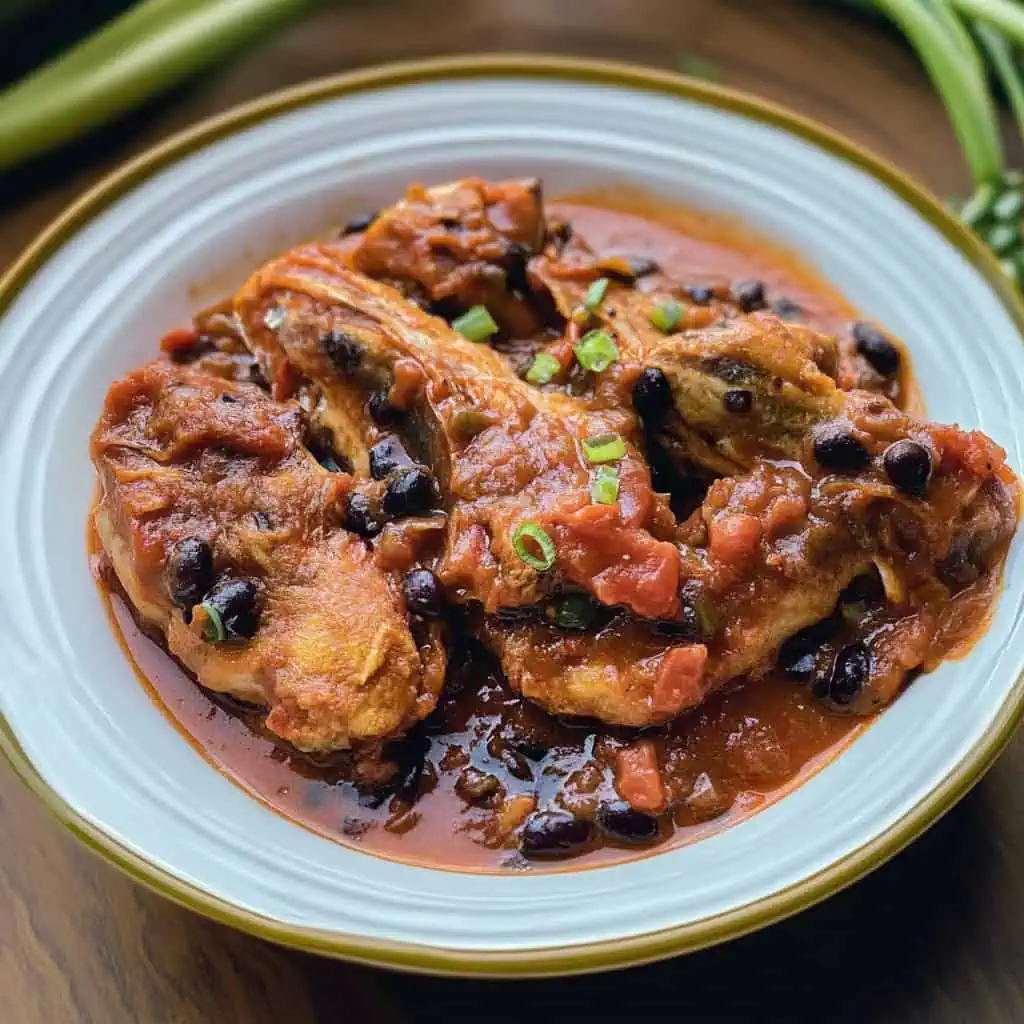
Why You'll Love This Recipe
- Perfect balance of savory and tangy flavors
- Double-cooking technique ensures crispy fish exterior with tender meat
- Rich in protein and healthy omega-3 fatty acids
- Authentically Filipino with Chinese influences
- Great way to repurpose leftover fried fish
- Budget-friendly yet restaurant-quality dish
Ingredients
The ingredients in Totsong Bangus work together to create a perfect harmony of flavors and textures. Bangus (milkfish) is the star for its tender flesh and ability to absorb flavors well. Fermented black beans (tausi) and bean cakes (tahure) contribute deep umami notes that form the foundation of this Filipino-Chinese fusion dish.
Fresh aromatics like onion, garlic, and ginger create a fragrant base, while tomatoes add natural sweetness and acidity that balances the salty fermented elements. The double-cooking method — frying first, then simmering — ensures the fish maintains its crispy exterior while soaking up the rich sauce.
Every component plays an essential role in creating a dish that's both hearty and complex, making the most of traditional ingredients that have been paired together in Filipino kitchens for generations.
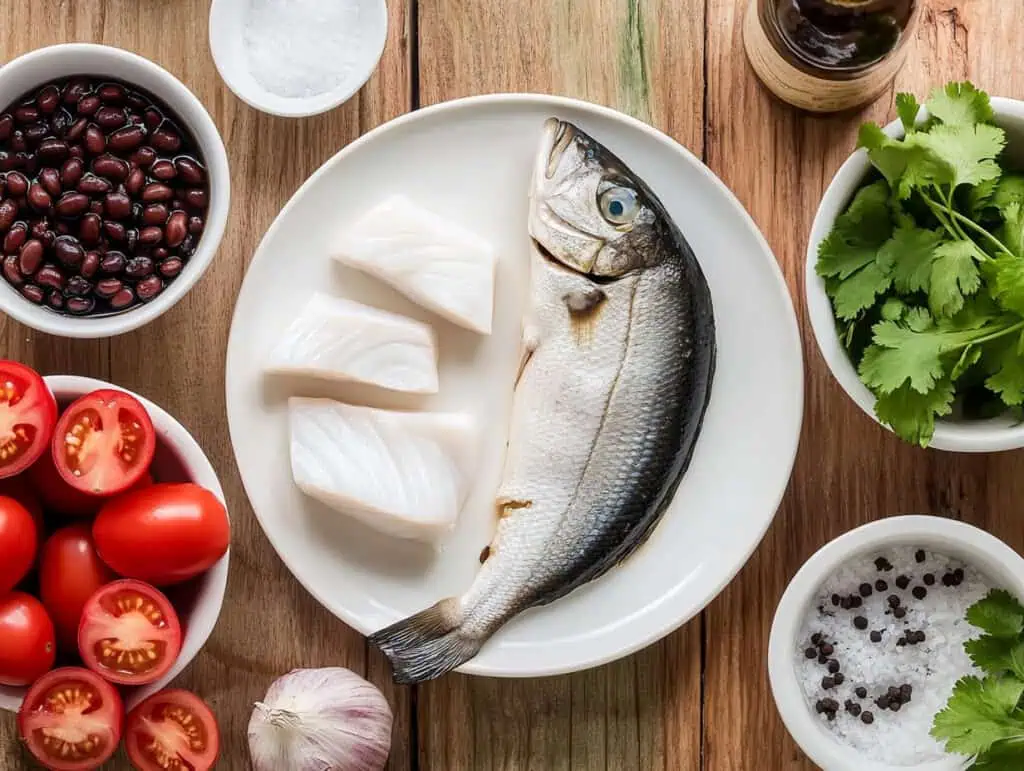
For the Fish:
- 1 whole bangus (milkfish/Chanos chanos), about 1 kg, scaled, gutted, and cut into serving pieces
- Salt and pepper to taste
- 2 cups canola oil for frying
For the Sauce:
- 1 medium onion, peeled and thinly sliced
- 3 cloves garlic, peeled and minced
- 1 thumb-sized ginger, peeled and julienned
- 2 large Roma tomatoes, chopped
- 2 squares tahure (fermented bean cakes/tokwa), drained
- 2 tablespoons vinegar
- 1 cup water
- ½ cup tausi (fermented black beans), rinsed and drained
Equipment
- Large non-stick skillet (kawali) - For frying the fish to golden perfection without sticking.
- Medium Saucepan (Kaserola) - For cooking the flavorful sauce where all the magic happens.
- Sharp knife (kutsilyo) - Essential for cleaning fish properly and chopping ingredients uniformly.
- Cutting board (Tabla) - Provides a stable, clean surface for all your prep work.
- Spider strainer (siyanse) - Helps safely remove the fried fish while leaving behind excess oil.
- Kitchen thermometer - Ensures oil reaches the optimal temperature for perfect frying.
- Tongs (Sipit) - For safely handling the fish without breaking it.
- Paper towels - Used for draining excess oil from the fried fish.
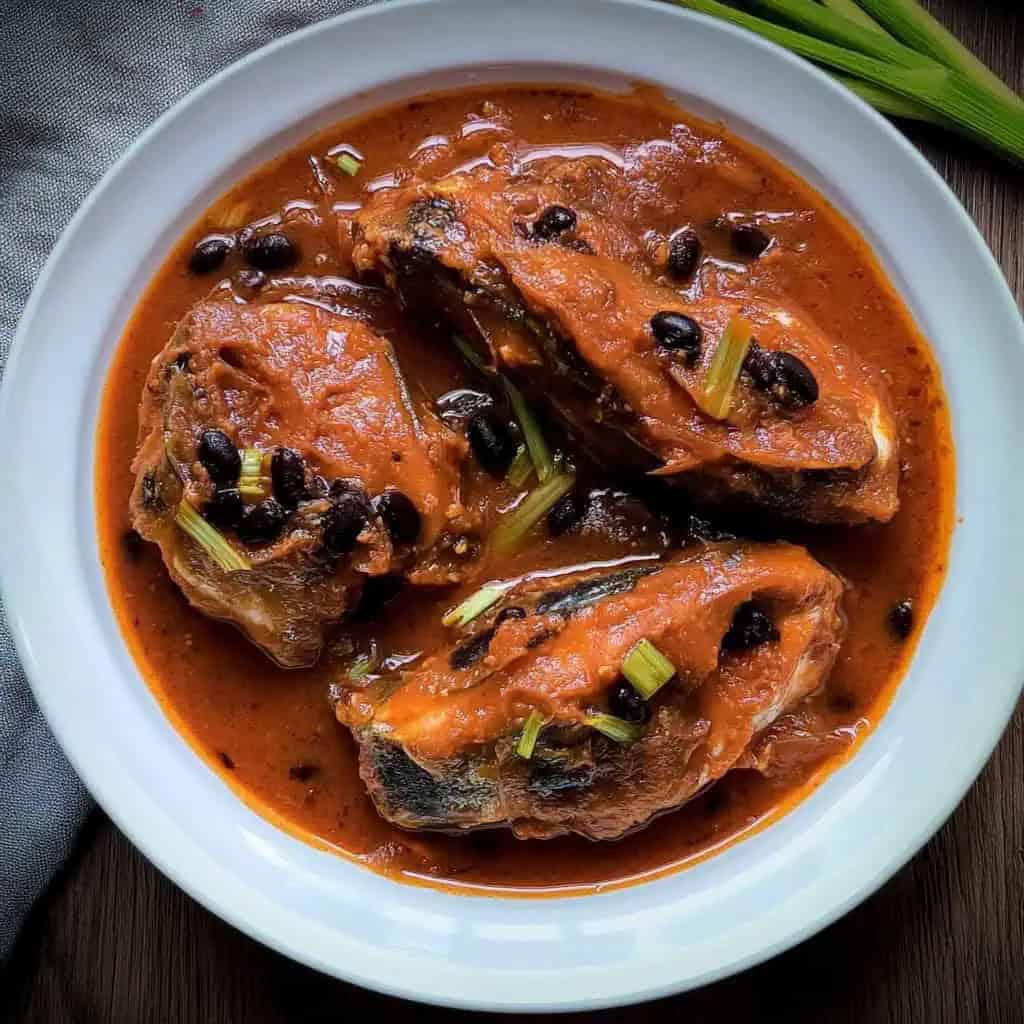
How To Make
- Pat the milkfish pieces completely dry with paper towels. Season both sides generously with salt and pepper. Let rest for 10 minutes to allow the seasoning to penetrate the fish.
- Heat 2 inches of oil in a large skillet over medium heat (350°F/175°C). Once hot, carefully place the fish pieces in the oil and fry for 3-5 minutes on each side until golden brown. Remove and drain on paper towels.
- In a clean pan, heat 1 tablespoon of oil over medium heat. Add the sliced onions and cook until they become clear, about 2 minutes. Add garlic and ginger, cooking until you can smell their aroma, about 1 minute. Add the chopped tomatoes and cook until they soften, pressing them gently with your spoon.
- In a bowl, mash the tahure. Mix in the vinegar and water until well combined. Pour this mixture into the pan and let it come to a gentle boil. Add the rinsed tausi and stir gently. Let this simmer for 2-3 minutes to develop the flavors.
- Carefully place your fried fish pieces in the pan in a single layer. Cover and lower the heat. Let everything simmer together for 4-6 minutes, or until the fish is heated through and has absorbed the sauce flavors. Taste and add more salt and pepper if needed.
- Let the dish rest for 2-3 minutes before serving. Spoon the sauce generously over the fish and serve hot with steaming rice.
Note: If the sauce becomes too thick while cooking, add a little hot water, one tablespoon at a time, until you reach your desired consistency.

Tips from Lola's Kitchen
- Select the perfect bangus - Choose fish that's truly fresh with clear eyes and bright red gills. The fresher the fish, the better your dish will taste.
- Score before frying - Make 3-4 diagonal cuts on each side of the fish pieces. This allows even cooking and helps the flavors penetrate deeper.
- Dry thoroughly before frying - Excess moisture causes oil splatters and prevents crispy skin. Take the time to pat the fish completely dry.
- Perfect frying temperature - Maintain oil at 350°F/175°C for that golden-brown exterior without overcooking the tender flesh inside.
- Don't rush the sauce - Allow the aromatics and tomatoes to fully soften and release their flavors before adding the fermented ingredients.
- Gentle handling - Use a spatula to carefully flip the fish to preserve its shape and prevent breaking.
- Layer flavors gradually - Add ingredients in the proper sequence to build a complex, well-balanced sauce.
- Rest before serving - Those final 2-3 minutes of resting time allows the flavors to settle and distribute evenly throughout the dish.
Substitutions
- Bangus → Tilapia or any firm white fish - While the flavor profile will be slightly different, these alternatives work well with the same cooking technique.
- Tahure → Extra firm tofu - Less fermented flavor but still provides texture. You may want to add a dash of fish sauce for umami.
- Tausi → Miso paste - Use about half the amount as it's saltier. This provides umami but with a different flavor profile.
- Roma tomatoes → Any ripe tomatoes - The key is using tomatoes at peak ripeness for the best flavor.
- Fresh ginger → 1 teaspoon ginger powder - In a pinch, but fresh is strongly preferred for the aromatic quality.
- Canola oil → Any neutral cooking oil - Vegetable, corn, or peanut oil all work well for frying.
- Vinegar → Calamansi juice or lemon juice - For a different but complementary citrus tang.
Troubleshooting
- Fish breaking apart: Temperature too high or fish moved too much during cooking. Keep heat moderate and handle the fish gently, allowing it to cook undisturbed.
- Sauce too salty: The fermented ingredients can sometimes pack more salt than expected. Add a splash of vinegar or water to balance, or include a bit more chopped tomato to counter the saltiness.
- Sauce too thin: Simply simmer uncovered for a few more minutes to reduce and concentrate the flavors.
- Fish not crispy: Oil wasn't hot enough during initial frying. Make sure to heat oil properly (350°F/175°C) before adding fish.
- Bitter taste: Usually indicates garlic or ginger was burned. Always sauté aromatics on medium heat and watch carefully.
- Fishy smell persists: Fish wasn't fresh enough or not cleaned properly. Always buy the freshest fish and clean it thoroughly, removing all gills and internal organs.
Storage & Reheating
- Refrigeration: Store in an airtight container in the refrigerator for up to 3 days. The flavors often develop further overnight, making leftovers even more delicious!
- Freezing: For best results, separate the fish and sauce before freezing. Store in freezer-safe containers for up to 1 month. Thaw completely in refrigerator before reheating.
- Stovetop reheating: Place in a pan over low heat (300°F/150°C) with a splash of water to prevent drying out. Cover and heat gently until just warmed through.
- Microwave reheating: Place in a microwave-safe container, cover loosely, and heat for 1-2 minutes on medium power. Let stand for 30 seconds before checking temperature.
- Avoid reheating multiple times: For food safety and quality, only reheat what you plan to consume immediately.
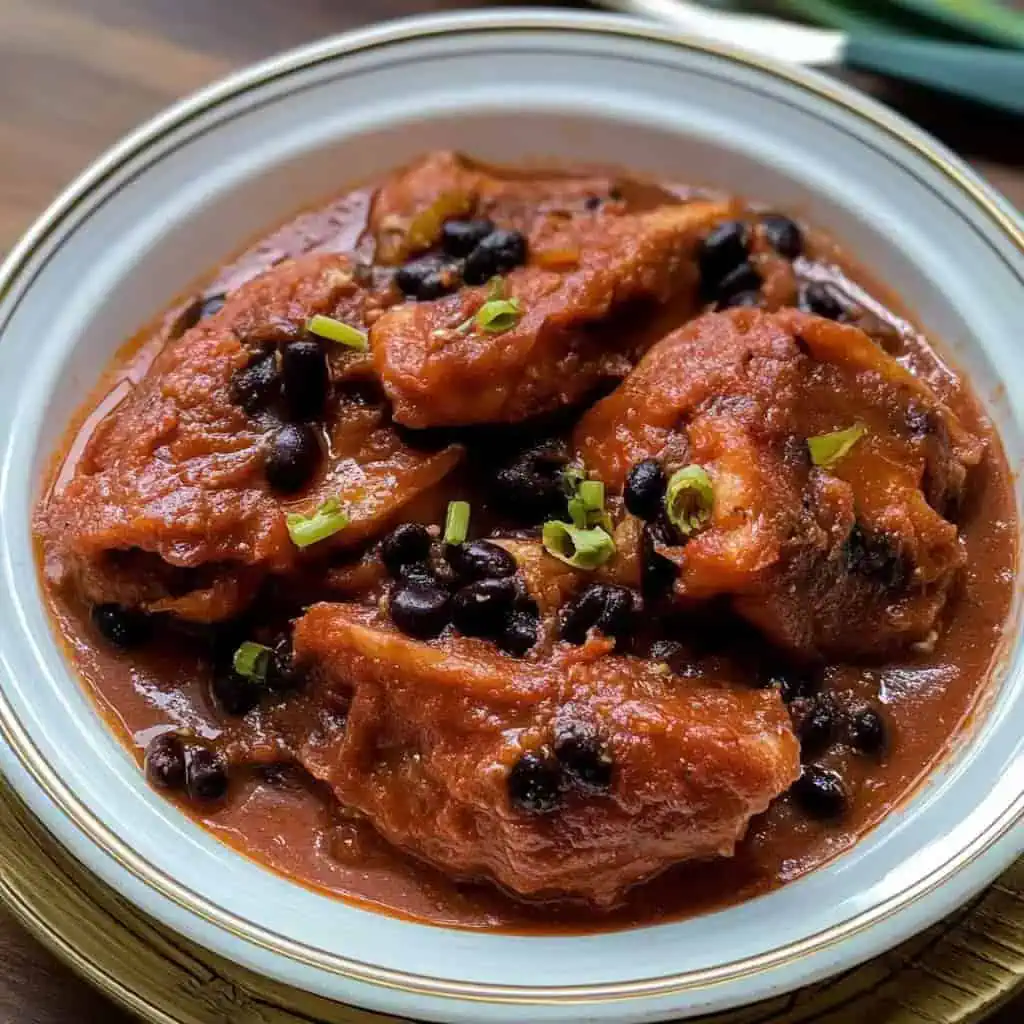
FAQ
Can I use boneless bangus?
Yes, absolutely! Boneless milkfish fillets work well in this recipe and make eating easier. Just reduce the cooking time slightly as they will cook faster than bone-in pieces.
Why do I need to rinse the tausi (fermented black beans)?
Rinsing removes excess salt and allows you to control the overall saltiness of the dish. You want the complex fermented flavor without overwhelming saltiness.
Can I make this dish ahead of time?
Yes, and many people find it tastes even better the next day as the flavors continue to develop. Simply reheat gently before serving.
Is this recipe keto-friendly?
Yes, the dish is naturally low in carbohydrates. For strict keto, use less or skip the tahure, and ensure there are no added sugars in your fermented bean products.
Can I use canned tomatoes instead of fresh?
Absolutely. Substitute with 1 cup of crushed tomatoes. You may need to cook them a bit longer to reduce the liquid and concentrate flavors.
What's the difference between tausi and tahure?
Tausi (fermented black beans) are small, intensely flavored fermented soybeans, while tahure (fermented bean cake) is a form of fermented tofu with a creamy texture. They provide different dimensions of umami to the dish.
Can I make this dish less fishy tasting?
Yes, soaking the bangus in a mixture of water and vinegar for 15 minutes before cooking can help reduce any strong fishy flavors.
How do I know when the oil is the right temperature for frying?
If you don't have a thermometer, drop a small piece of bread into the oil - it should sizzle and turn golden brown in about 60 seconds if the oil is at the right temperature.
Related
Looking for other recipes like this? Try these:
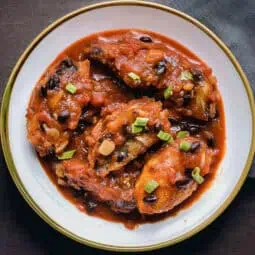
Totsong Bangus (Milkfish in Fermented Black Bean Sauce)
Equipment
- Large non-stick skillet (kawali) for frying fish
- Medium Saucepan (Kaserola) for cooking the sauce
- Sharp knife (kutsilyo) for cleaning fish and chopping ingredients
- Cutting board (Tabla) for preparation
- Spider strainer (siyanse) for removing fried fish
- Kitchen thermometer for precise oil temperature
- Tongs [Sipit] for handling fish
- Paper towels for draining excess oil
Ingredients
For the Fish:
- 1 whole bangus milkfish/Chanos chanos, about 1 kg, scaled, gutted, and cut into serving pieces
- Salt and pepper to taste
- 2 cups canola oil for frying
For the Sauce:
- 1 medium onion sibuyas, peeled and thinly sliced
- 3 cloves garlic bawang, peeled and minced
- 1 thumb-sized ginger luya, peeled and julienned
- 2 large Roma tomatoes kamatis, chopped
- 2 squares tahure fermented bean cakes/tokwa, drained
- 2 tablespoons vinegar suka
- 1 cup water tubig
- ½ cup tausi fermented black beans, rinsed and drained
Instructions
- Pat the milkfish pieces completely dry with paper towels. Season both sides generously with salt and pepper. Let rest for 10 minutes to allow the seasoning to penetrate the fish.
- Heat 2 inches of oil in a large skillet over medium heat (350°F/175°C). Once hot, carefully place the fish pieces in the oil and fry for 3-5 minutes on each side until golden brown. Remove and drain on paper towels.
- In a clean pan, heat 1 tablespoon of oil over medium heat. Add the sliced onions and cook until they become clear, about 2 minutes. Add garlic and ginger, cooking until you can smell their aroma, about 1 minute. Add the chopped tomatoes and cook until they soften, pressing them gently with your spoon.
- In a bowl, mash the tahure. Mix in the vinegar and water until well combined. Pour this mixture into the pan and let it come to a gentle boil. Add the rinsed tausi and stir gently. Let this simmer for 2-3 minutes to develop the flavors.
- Carefully place your fried fish pieces in the pan in a single layer. Cover and lower the heat. Let everything simmer together for 4-6 minutes, or until the fish is heated through and has absorbed the sauce flavors. Taste and add more salt and pepper if needed.
- Let the dish rest for 2-3 minutes before serving. Spoon the sauce generously over the fish and serve hot with steaming rice.
- Note: If the sauce becomes too thick while cooking, add a little hot water, one tablespoon at a time, until you reach your desired consistency.
Tips from Lola's Kitchen
- Choose bangus that's fresh - eyes should be clear and gills should be bright red
- Score the fish sides (3-4 diagonal cuts) before frying for even cooking
- Don't skip the initial frying step - it seals in the fish's flavor
- Rinse tausi thoroughly to control saltiness
- Let the tomatoes fully soften for a richer sauce
- Keep heat low when simmering to prevent the fish from breaking apart
Nutrition
The Story Behind Totsong Bangus
At the intersection of Filipino ingenuity and Chinese culinary influence lies Totsong Bangus, a dish that perfectly captures the evolution of Philippine cuisine. While its exact origins remain unclear, this beloved recipe emerged from coastal communities where bangus (milkfish) was abundant and Chinese ingredients like tausi (fermented black beans) and tahure (fermented bean cakes) were becoming pantry staples through centuries of trade and cultural exchange.
The name itself tells a story - "totso" or "tocho" comes from "tausi," reflecting how Filipinos have historically adapted Chinese ingredients and cooking techniques to suit local tastes. What makes this dish particularly special is its practical origins - it was likely developed as a way to make leftover fried fish more exciting and flavorful, a testament to Filipino resourcefulness in the kitchen. The double-cooking method, first frying the fish until golden and then simmering it in a savory sauce, is a technique found in many Filipino-Chinese dishes.
Today, Totsong Bangus remains a favorite in Filipino households, especially in regions where bangus is cultivated, like Pangasinan and Dagupan. The dish exemplifies how Filipino cuisine masterfully balances different flavors - the natural sweetness of milkfish, the umami depth of fermented beans, the tanginess of vinegar, and the fresh brightness of tomatoes. It's a dish that represents not just the fusion of flavors but also the blending of cultures that makes Filipino food so unique.
Modern Filipino home cooks continue to embrace this recipe, often adding their own twists while maintaining its essential character. Whether served for family lunches, brought to potluck gatherings, or featured in carinderias (local eateries), Totsong Bangus stands as a delicious reminder of the rich cultural tapestry that influences Philippine cuisine. Its enduring popularity proves that the best dishes are often those that tell a story of cultural connection and culinary adaptation.
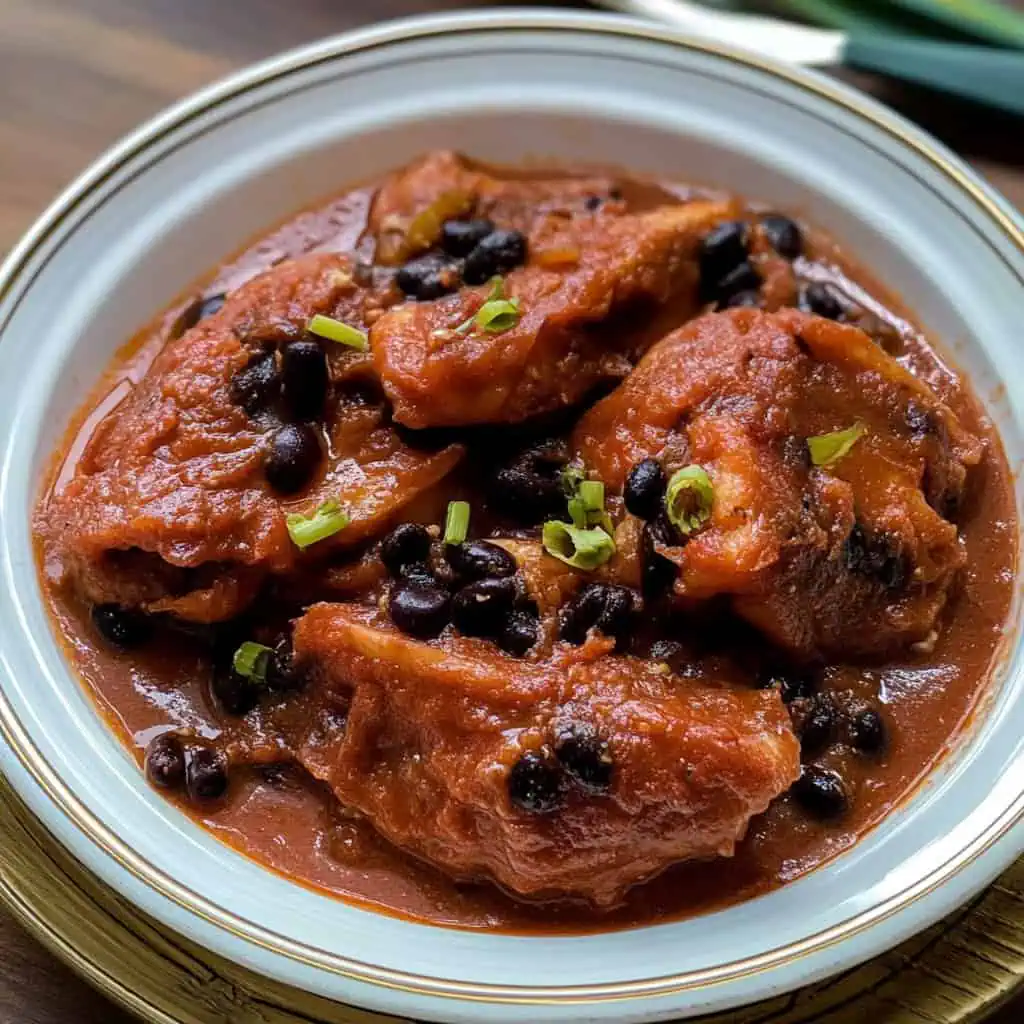

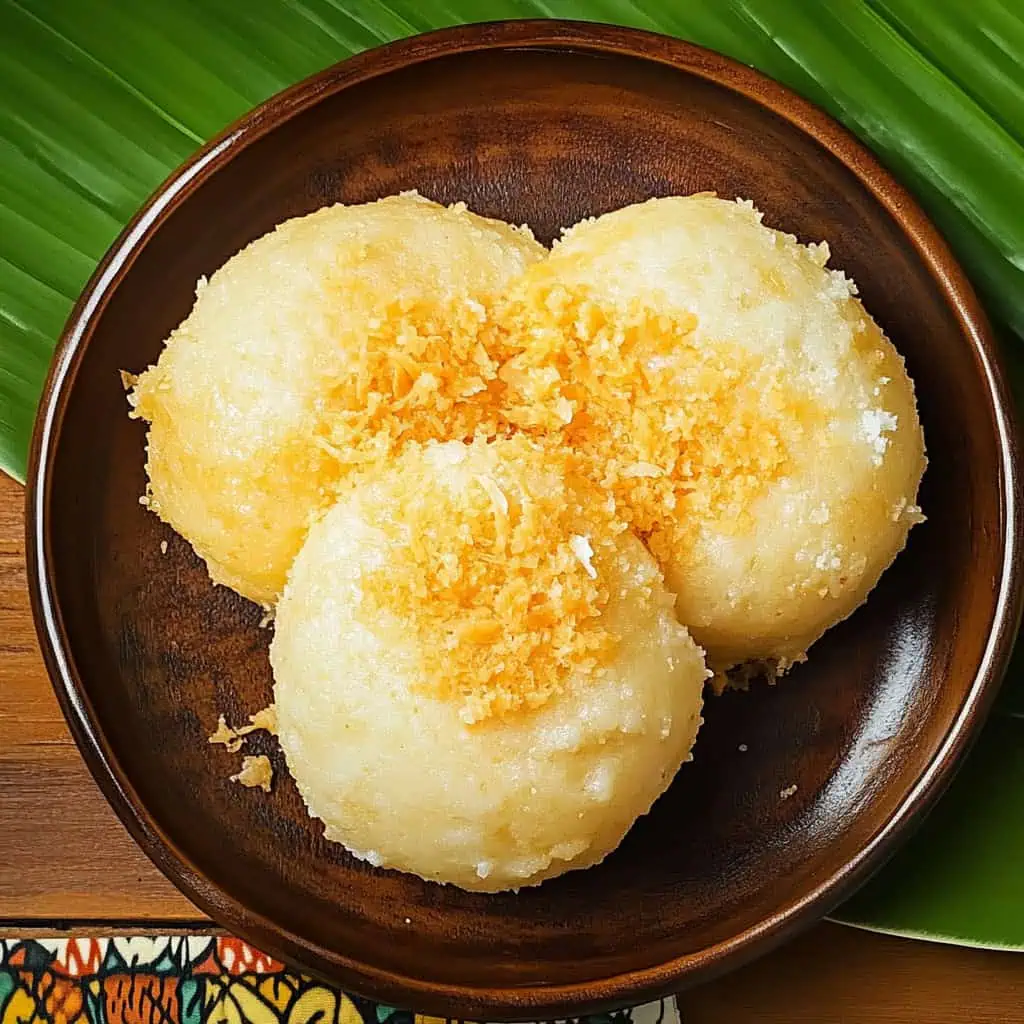
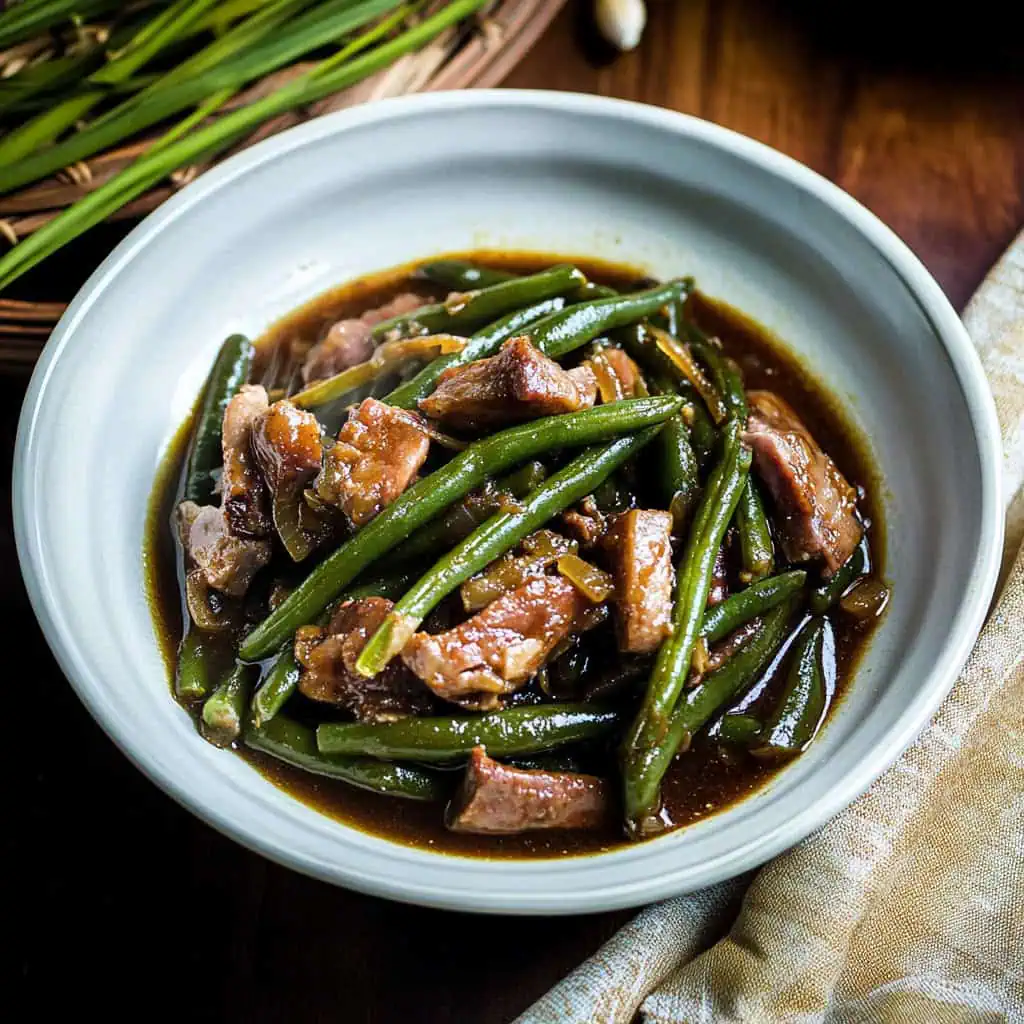

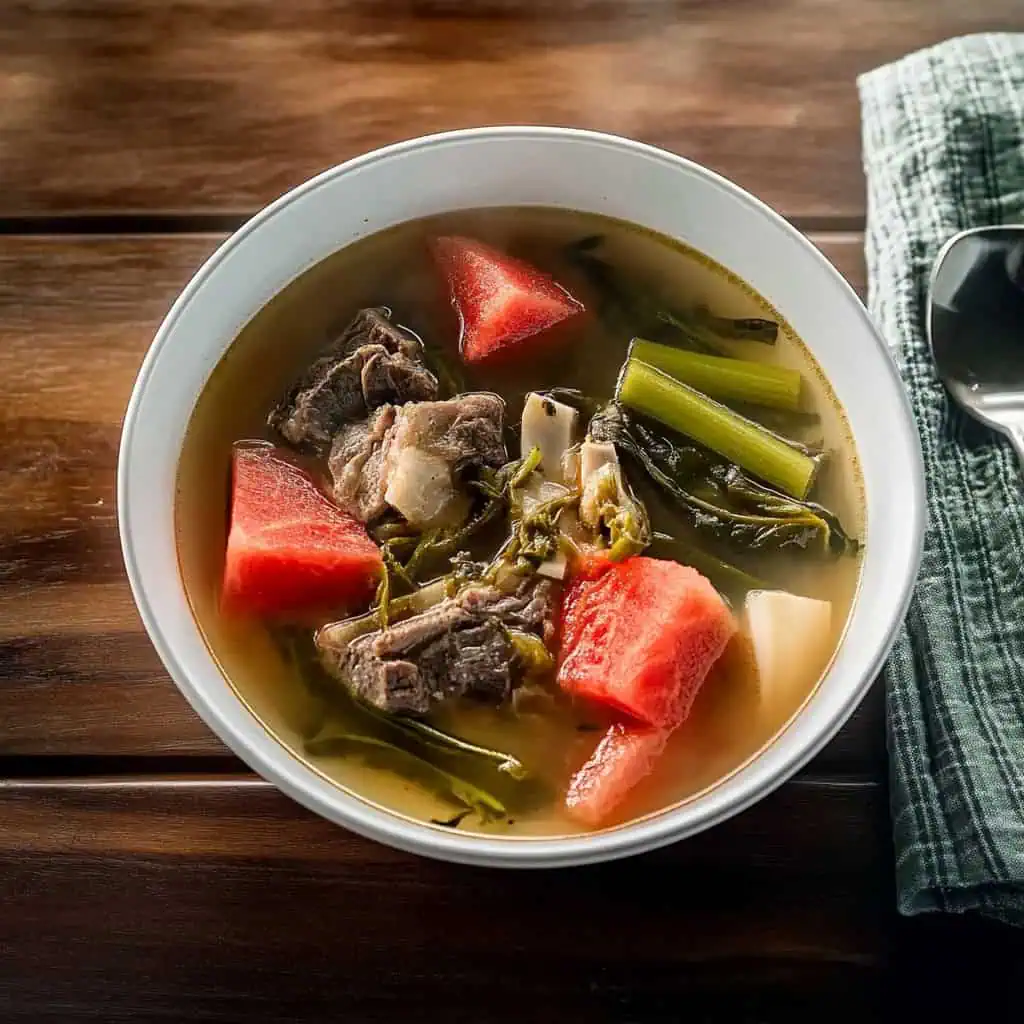




Comments
No Comments